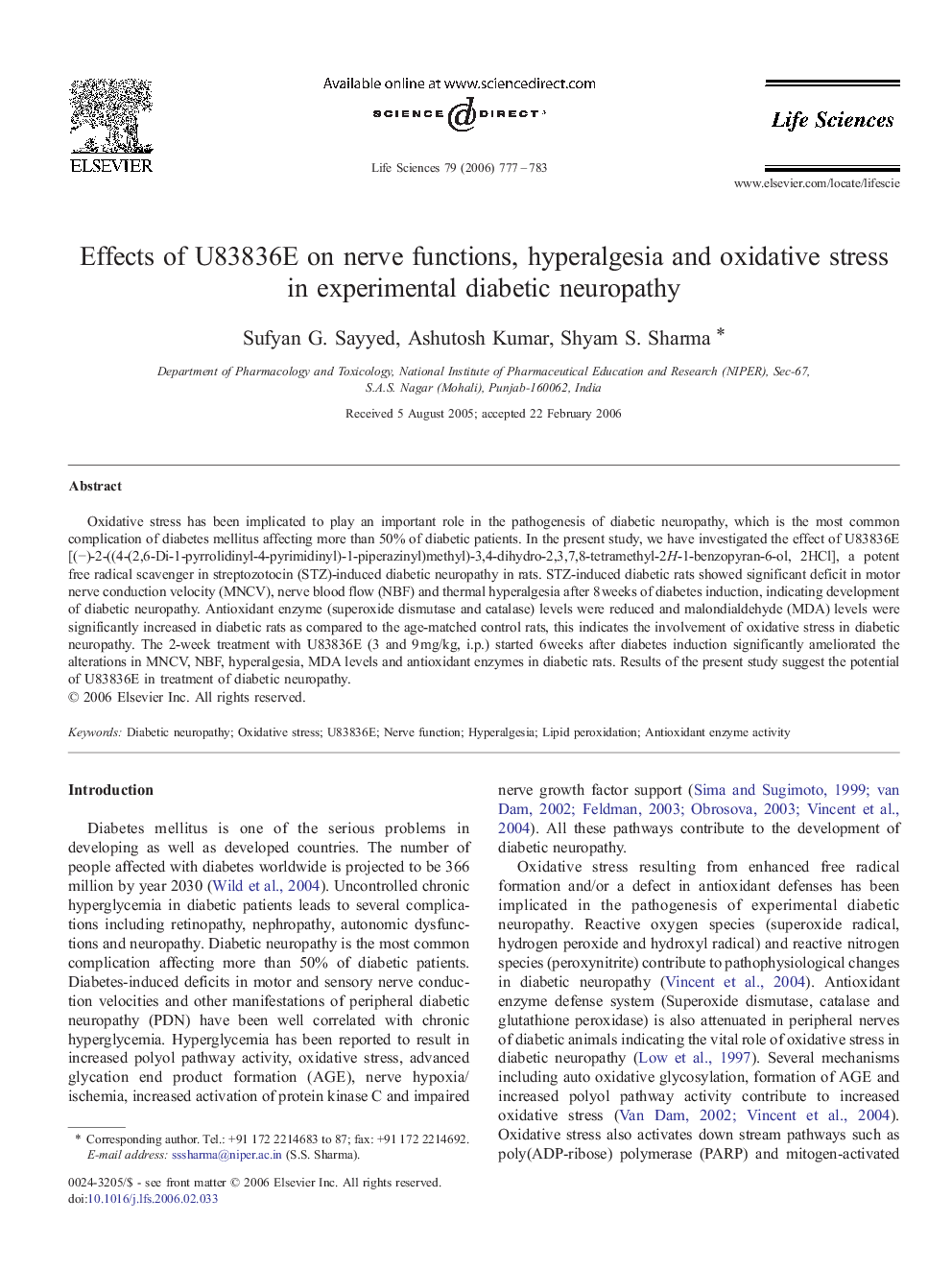| Article ID | Journal | Published Year | Pages | File Type |
|---|---|---|---|---|
| 2554421 | Life Sciences | 2006 | 7 Pages |
Oxidative stress has been implicated to play an important role in the pathogenesis of diabetic neuropathy, which is the most common complication of diabetes mellitus affecting more than 50% of diabetic patients. In the present study, we have investigated the effect of U83836E [(−)-2-((4-(2,6-Di-1-pyrrolidinyl-4-pyrimidinyl)-1-piperazinyl)methyl)-3,4-dihydro-2,3,7,8-tetramethyl-2H-1-benzopyran-6-ol, 2HCl], a potent free radical scavenger in streptozotocin (STZ)-induced diabetic neuropathy in rats. STZ-induced diabetic rats showed significant deficit in motor nerve conduction velocity (MNCV), nerve blood flow (NBF) and thermal hyperalgesia after 8 weeks of diabetes induction, indicating development of diabetic neuropathy. Antioxidant enzyme (superoxide dismutase and catalase) levels were reduced and malondialdehyde (MDA) levels were significantly increased in diabetic rats as compared to the age-matched control rats, this indicates the involvement of oxidative stress in diabetic neuropathy. The 2-week treatment with U83836E (3 and 9 mg/kg, i.p.) started 6 weeks after diabetes induction significantly ameliorated the alterations in MNCV, NBF, hyperalgesia, MDA levels and antioxidant enzymes in diabetic rats. Results of the present study suggest the potential of U83836E in treatment of diabetic neuropathy.
